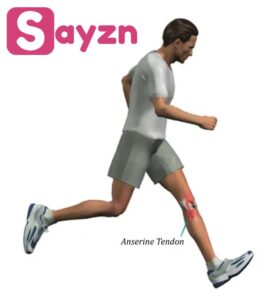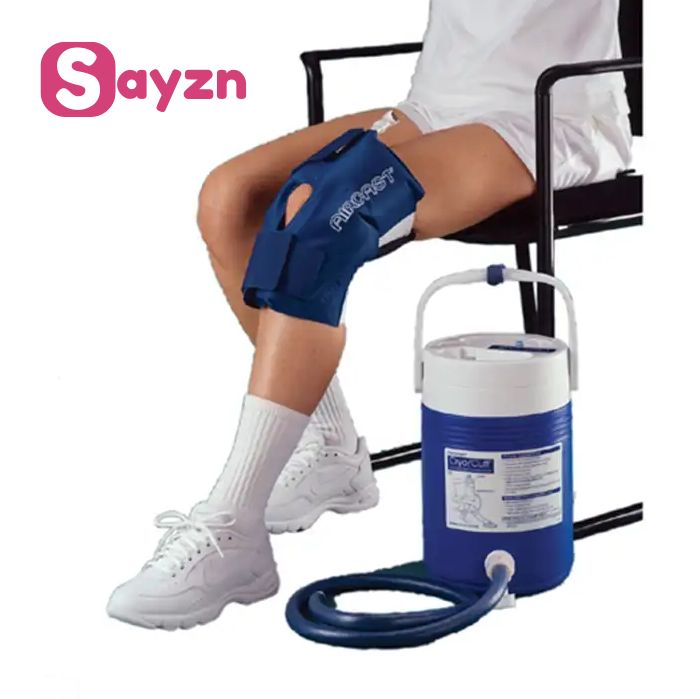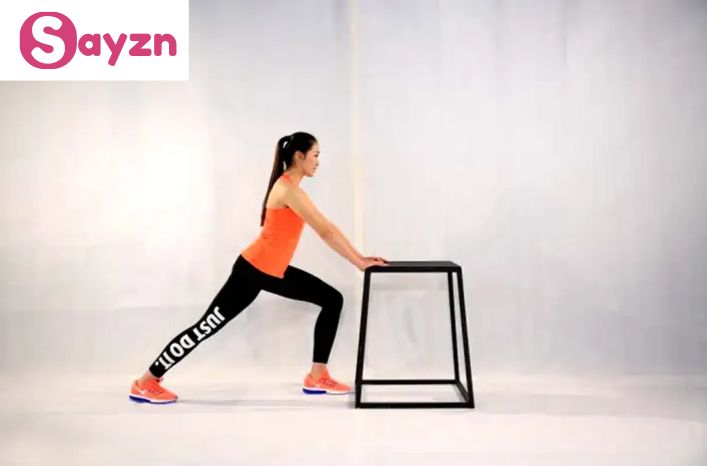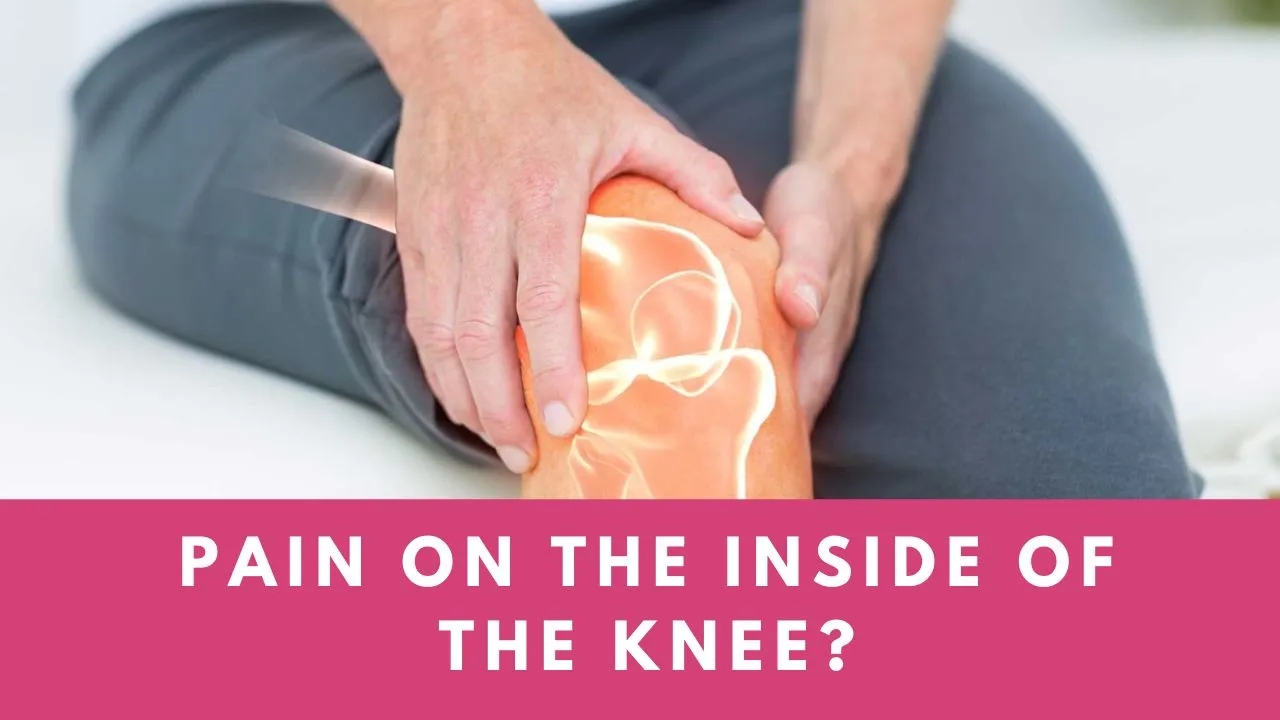Knee pain has always been the number one pain problem plaguing runners. Different locations of knee pain have different natural causes, symptoms, treatments and recovery. In the past, many articles about huipao explained to runners in detail the two most common problems, front and side knee pain. Today I’m going to talk to runners about medial knee pain that can be caused by running.
Common causes of knee pain
1. Pain on the inside of the knee? Most likely it is a bursitis of the anserin tendon
Anserine tendon bursitis is the most common cause of medial knee pain. How come the human body has “goose feet”? First let me explain. The articular tendon made up of the sartorius, gracilis and semitendinosus muscles is a structure that runs down the inside of the knee joint and ends at the shinbone. Because its shape resembles the foot of the anserine foot, it is also called “Anserine”.Anserinus tendon of the foot.”
Muscle contractions pull on tendons that are attached to bones, creating movement in the bones. To reduce excessive friction between the tendon and the bone surface when pulling the bone, a special soft tissue – the pedis anserinus tendon bursa – is formed between the anserin tendon and the tibia. Thickening of the bursa wall and excessive production of bursal fluid, leading to local swelling and pain, is called pes anserin tendon bursitis.

2. Causes
The anserin tendon bursa can prevent excessive friction between tendons and bone, but there are pros and cons to each. During repeated flexion and extension exercises of the knee joint, such as. When running, for example, the tendons do not rub violently against the underlying bone due to the bursa of the anserin tendon. . However, the tendon may rub excessively against the underlying anserine tendon bursa, meaning the tendon can cause one at the expense of the other, resulting in anserine tendon bursitis. In addition, the local tendons are intercalated and tightly arranged in the area of the pes anserine tendon bursa. When these tendons are not coordinated consistently, chronic strain can easily occur, aggravating pes anserinus tendon bursitis.
Generally speaking, Pes anserinus tendon bursitis is also a “ Overuse injuries “. The cause of its occurrence is largely related to the high frequency of flexion and extension of the knee joint as well as adduction and internal rotation of the calf. Therefore, bursitis of the pes anserinus tendon is not uncommon in runners.
3. Main symptoms of medial knee pain
1. Pain in the front and middle of the knee joint that worsens after exertion and subsides after rest;
2. Pain, tenderness and swelling 2-5 cm below the joint line on the inside of the knee joint;
3. The pain worsens when bending and extending the knee joint and when going up and down stairs (especially when climbing stairs).
4. Treatment and rehabilitation methods for medial knee pain
1. Calm
For overuse injuries, rest has always been the only way to relieve symptoms. If you feel pain on the inside of your knee while running, please stop immediately. At the same time, it is also necessary to properly control the running volume. Numerous scientific studies unanimously conclude that normal people should not walk more than 40 miles (approximately 64 kilometers) per week. If you spend more time running, the likelihood of physical strain increases significantly.
2. Treatment
1) For pain on the inside of the knee that occurs immediately after exercise, you can apply ice for relief.
2) Apply nonsteroidal anti-inflammatory drugs such as Voltaren, Indomethacin, etc. (It is recommended to use topical medications instead of oral medications.)
3) In more severe cases (obvious swelling and unbearable pain), it is recommended to see a doctor as soon as possible and follow the doctor’s instructions for physical therapy.
4) For non-acute medial knee pain, you can contact the physical therapy or rehabilitation department of the hospital for physical therapy.

Additionally, Muscle tape can also be used to improve proprioception on the inside of the knee.
3. Stretching
When the muscles around the knee joint are too tight, there is increased friction between the anserine tendon and the anserine tendon bursa. Therefore, tense muscles and insufficient flexibility are also important causes of anserin tendon bursitis. Therefore, target the knee joint after running. The muscles around the joints must be fully stretched.
Stretching the calf and thigh tendons

4.Training
Stretching alone is not enough. Strengthening the muscle strength around the knee joint (front and back of the thigh, back of the calf) and strengthening the stability of the knee joint are the basic solutions. How can you improve? Here are some simple, effective and commonly used actions.
5. Summary
Anserine pad bursitis is pain on the inside of the knee caused by overuse. Commonly used treatment methods include rest, ice application, use of anti-inflammatory drugs, etc. In more severe cases, it is recommended to consult a doctor and undergo physical therapy. After the inflammation has subsided, the pain is significantly reduced or even disappears completely; Improving the quality of the muscles around the knee joint through stretching and strength training is a fundamental method for treating footpad bursitis. Runners who suffer from internal knee pain, do you know how to deal with it?





